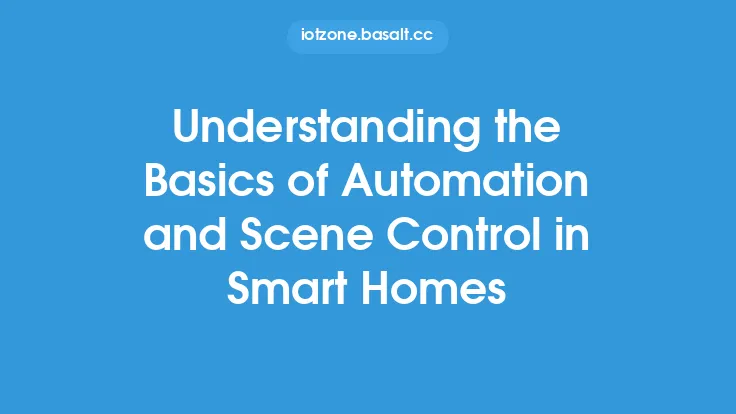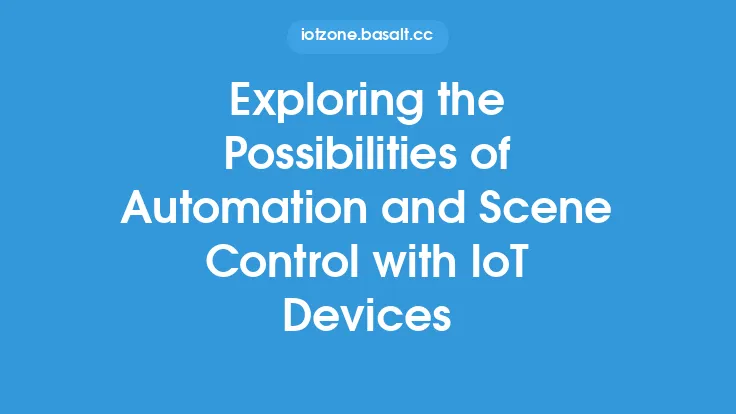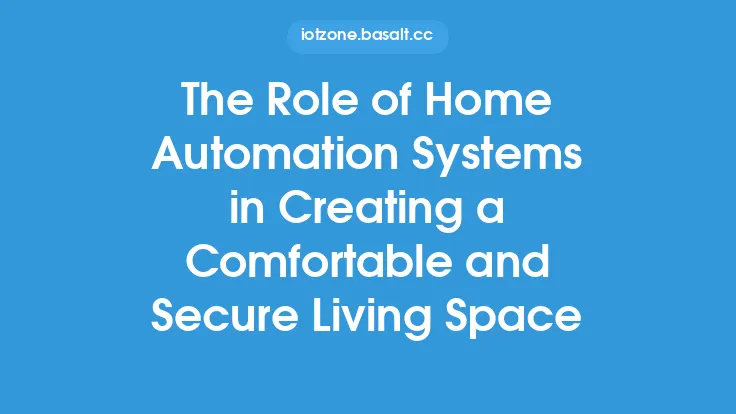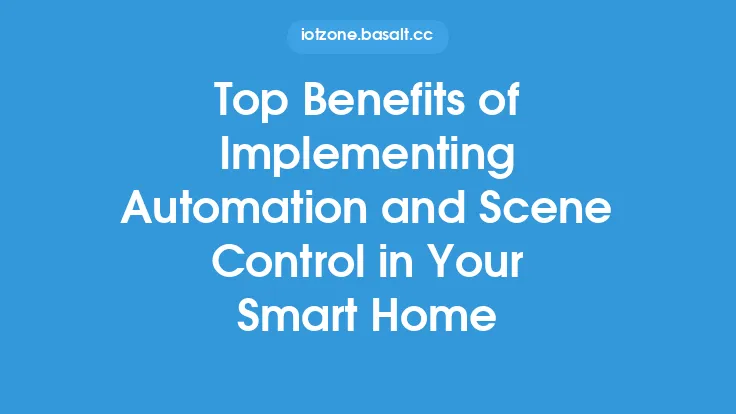The world of smart home automation has witnessed significant advancements in recent years, and one of the key components driving this innovation is sensors. Sensors play a vital role in automation and scene control, enabling smart homes to respond to various stimuli and adjust their settings accordingly. In this article, we will delve into the world of sensors and explore their significance in creating a seamless and automated smart home experience.
Introduction to Sensors
Sensors are devices that detect and respond to changes in their environment, such as temperature, light, motion, and pressure. In the context of smart home automation, sensors are used to gather data about the home's environment and occupants, which is then used to trigger automated responses. For instance, a motion sensor can detect when someone enters a room and turn on the lights, while a temperature sensor can adjust the thermostat to maintain a comfortable temperature.
Types of Sensors
There are various types of sensors used in smart home automation, each with its unique characteristics and applications. Some of the most common types of sensors include:
- Motion sensors: These sensors use infrared or ultrasonic technology to detect movement and are often used to control lighting, security systems, and HVAC systems.
- Temperature sensors: These sensors measure the temperature in a room or area and are used to control thermostats, heating and cooling systems, and ventilation systems.
- Light sensors: These sensors measure the amount of light in a room or area and are used to control lighting systems, blinds, and shades.
- Pressure sensors: These sensors measure the pressure in a room or area and are used to control security systems, door locks, and window locks.
- Humidity sensors: These sensors measure the humidity levels in a room or area and are used to control HVAC systems, dehumidifiers, and humidifiers.
How Sensors Work
Sensors work by converting physical parameters into electrical signals, which are then transmitted to a controller or hub. The controller interprets the signals and triggers the corresponding automated response. For example, when a motion sensor detects movement, it sends an electrical signal to the controller, which then turns on the lights. The controller can also be programmed to perform more complex tasks, such as adjusting the lighting levels based on the time of day or the occupancy of the room.
Sensor Technologies
There are various sensor technologies used in smart home automation, including:
- Infrared (IR) technology: IR sensors use infrared radiation to detect movement and are commonly used in motion sensors.
- Ultrasonic technology: Ultrasonic sensors use high-frequency sound waves to detect movement and are commonly used in motion sensors.
- Wi-Fi and Bluetooth technology: These technologies enable sensors to communicate with controllers and hubs wirelessly, making it easier to install and configure smart home systems.
- Zigbee and Z-Wave technology: These technologies are low-power, low-data-rate wireless communication protocols that enable sensors to communicate with controllers and hubs.
Applications of Sensors in Automation and Scene Control
Sensors have a wide range of applications in automation and scene control, including:
- Lighting control: Sensors can be used to control lighting levels, color, and intensity based on the time of day, occupancy, and ambient light levels.
- Temperature control: Sensors can be used to control thermostats, heating and cooling systems, and ventilation systems to maintain a comfortable temperature.
- Security systems: Sensors can be used to detect intruders, monitor door and window locks, and trigger alarms.
- Home entertainment: Sensors can be used to control audio and video systems, such as turning on the TV or sound system when someone enters the room.
Benefits of Using Sensors in Automation and Scene Control
The use of sensors in automation and scene control offers several benefits, including:
- Convenience: Sensors can automate various tasks, making it easier to control and manage smart home systems.
- Energy efficiency: Sensors can help reduce energy consumption by turning off lights, appliances, and systems when not in use.
- Enhanced safety and security: Sensors can detect potential safety and security risks, such as intruders or water leaks, and trigger alarms or notifications.
- Improved comfort: Sensors can help maintain a comfortable temperature, lighting level, and humidity level, creating a more pleasant living environment.
Challenges and Limitations of Sensors in Automation and Scene Control
While sensors offer many benefits in automation and scene control, there are also some challenges and limitations to consider, including:
- Interference: Sensors can be affected by interference from other devices, such as cordless phones or microwaves, which can impact their accuracy and reliability.
- Calibration: Sensors may require calibration to ensure accurate readings, which can be time-consuming and require technical expertise.
- Cost: Sensors can be expensive, especially high-end models with advanced features and technologies.
- Integration: Sensors may not be compatible with all smart home systems or devices, which can limit their functionality and flexibility.
Future Developments in Sensor Technology
The future of sensor technology holds much promise, with advancements in areas such as:
- Artificial intelligence (AI) and machine learning (ML): AI and ML can be used to improve sensor accuracy, reliability, and functionality, enabling more complex and sophisticated automation and scene control scenarios.
- Internet of Things (IoT) integration: The integration of sensors with IoT devices and platforms can enable more seamless and automated smart home experiences.
- Nanotechnology: Nanotechnology can be used to develop smaller, more efficient, and more accurate sensors, enabling new applications and use cases in automation and scene control.
Conclusion
Sensors play a vital role in automation and scene control, enabling smart homes to respond to various stimuli and adjust their settings accordingly. With their ability to detect and respond to changes in the environment, sensors can automate various tasks, improve energy efficiency, enhance safety and security, and create a more comfortable living environment. As sensor technology continues to evolve, we can expect to see even more innovative and sophisticated applications in automation and scene control, creating a more seamless and automated smart home experience.





